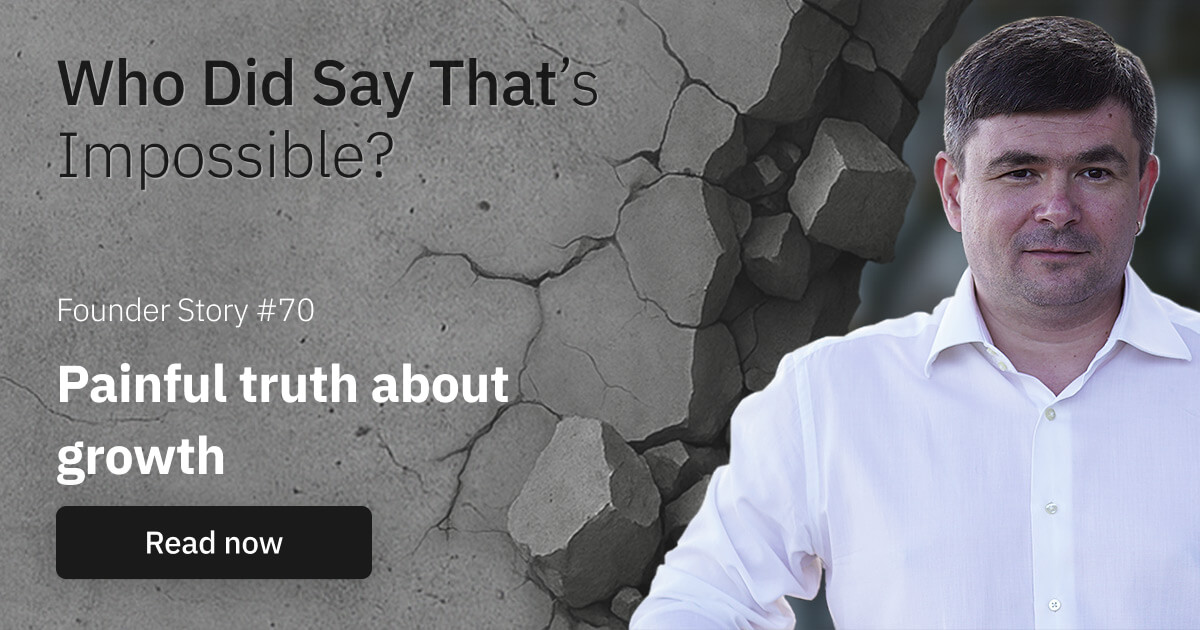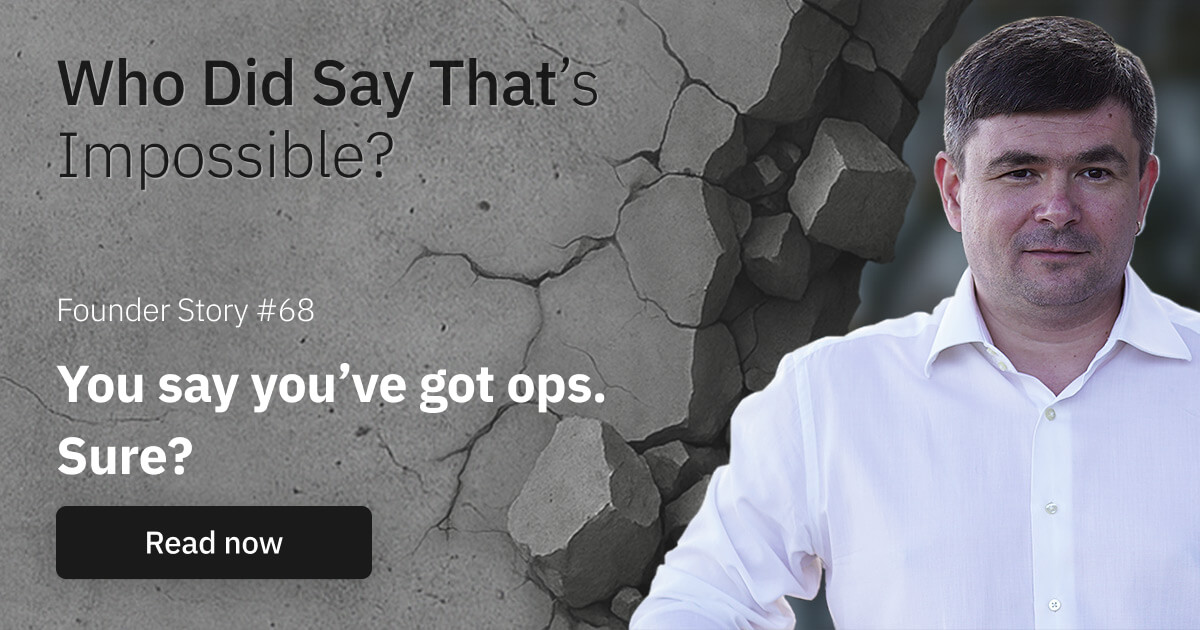The painful truth about growing a business
Or minute of realizing that “more people” isn’t the answer
I’ve told the story before, about my first partner, the crash, the layoffs, the survival years. But today I want to talk about something that came much later.
Not about how it all started, but about what happens when things finally work.
When you’ve built momentum, when clients are coming in, when the machine you created starts growing faster than your ability to steer it.
That’s the part no one warns you about. Success doesn’t arrive as a finish line.
It arrives as a second wave of pressure. Heavier, quieter, more sophisticated.
Because growth hides its chaos well.
At first, it feels like validation. More projects, more clients, more people.
You tell yourself, “This is what I wanted.” Until one morning you realize:
You’re busier than ever, but somehow… less in control than before.
The moment I lost the thread
It happened not at the beginning, but years into running the agency. We’d grown, stabilized, survived multiple crises. We had a team, a rhythm, predictable clients. From the outside, everything looked fine. Inside — I was drowning in invisible complexity.
Every new hire meant another layer of coordination.
Every manager meant another set of questions landing on my desk.
Every process we added made things slower, not faster.
It felt like the business had turned into a living organism with its own will — one I was supposed to control but couldn’t fully understand anymore. That’s when I realized something deeply uncomfortable:
Growth wasn’t the problem.
My leadership model was.
I was still operating like a founder of five people while running a team of fifty. Still trying to “help” with every decision. Still treating delegation as temporary relief, not structural transfer. And slowly, the business began to push back.
When more becomes less
The paradox of growth is that the very instincts that helped you survive early on, speed, intensity, hands-on control, become the obstacles that hold you back later.
At ten people, they make you efficient. At fifty, they make you dangerous.
I used to think my presence was what kept the business alive. Now I see it was also what kept it fragile. Because when every decision needs your input, you don’t have a team. You have extensions of yourself — and sooner or later, that version of “leadership” collapses under its own weight.
Firefighting became my default operating system. I mistook motion for progress, and urgency for importance. And the cruel irony was: the more I tried to control the chaos, the more I created it.
That’s when I learned the most painful truth of all.
Firefighting is not a growth strategy.
It’s a coping mechanism.
The turning point
At some point, exhaustion becomes clarity. You either burn out or you wake up.
I started mapping everything — not to document, but to see. Where decisions lived, where handoffs broke, where responsibility evaporated.
What I found was simple but devastating:
We weren’t missing effort.
We were missing ownership.
That realization changed everything.
We restructured not by adding people, but by redistributing authority.
We built clear lines between who does the work and who owns the result.
We created what I now call an architecture of accountability, a simple framework that replaced chaos with clarity.
And the business started breathing again.
What growth really asks of you
Looking back, I wish someone had told me:
Scaling isn’t about capacity. It’s about readiness.
When your business outgrows your system, every next hire amplifies your blind spots. Delegation without structure doesn’t free you, it multiplies the noise. If you feel like growth has only made things heavier, not easier — it’s not a sign of failure. It’s a sign your architecture hasn’t caught up yet. And that’s fixable.
But first, you have to stop mistaking movement for momentum.
Firefighting for leadership. And “more people” for progress.
- Eugene
Join the “most offbeat” Businessletter on entrepreneurship.

Hi, I’m Eugene.
Over the past 20+ years, I’ve grown an international agency from one-person freelance to a multimillion-dollar business. I’ve led teams, scaled systems, burned out, rebuilt, and learned (the hard way) what it really takes to run a business that doesn’t consume your life.
I help them make sense of complexity, design simple systems, and create the kind of business they actually want to run.
More Stories
Founder Stories

The painful truth about growing a business
Or minute of realizing that “more people” isn’t the answer

Why optimization never ends (and why that’s good)
Or minute of making peace with the unfinished


